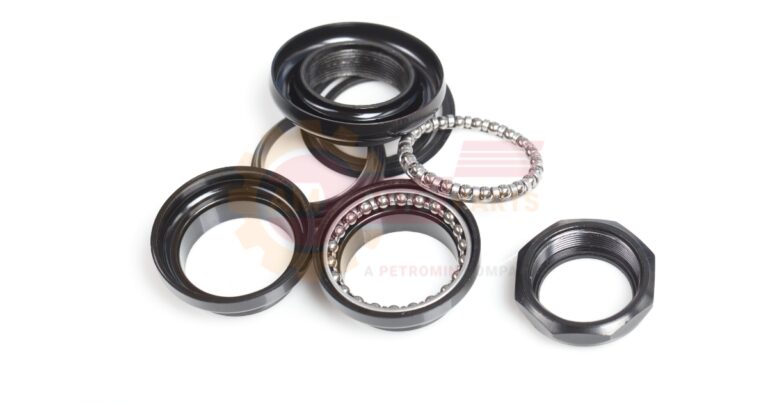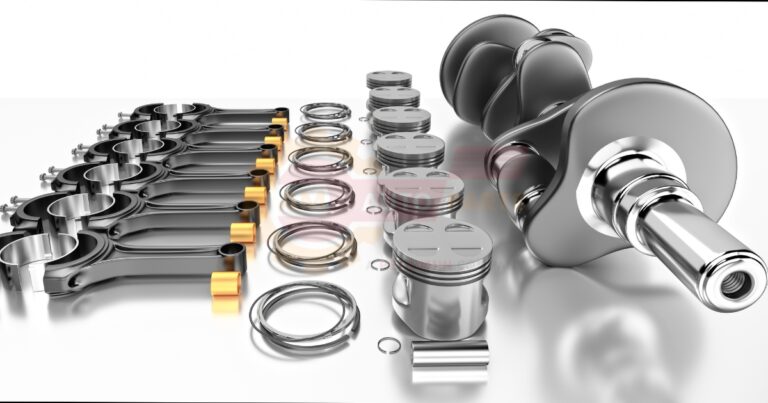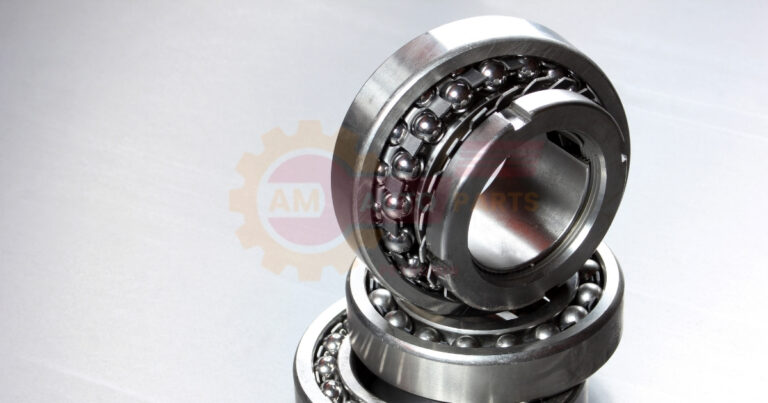Wheel Bearings: How Tight Should They Be?
Understanding Wheel Bearing Tightness
Wheel bearing tightness is a crucial aspect of vehicle maintenance that often goes overlooked. Proper adjustment of wheel bearings ensures smooth rotation of your wheels, optimal vehicle performance, and safety on the road. Let’s delve into the importance of correct wheel bearing adjustment and the signs that indicate potential issues.
Importance of Proper Wheel Bearing Adjustment
Proper wheel bearing adjustment is essential for several reasons:
- Smooth wheel rotation: Correctly adjusted bearings allow wheels to spin freely without excessive friction.
- Even weight distribution: Proper tightness ensures the vehicle’s weight is evenly distributed across the bearings.
- Reduced wear and tear: Optimal adjustment minimizes premature wear on bearings and related components.
- Enhanced safety: Correctly tightened bearings contribute to better vehicle control and stability.
According to AM Autoparts, “Maintaining the right wheel bearing tightness is crucial for your vehicle’s longevity and your safety on the road.”
Signs of Loose or Tight Wheel Bearings
Recognizing the symptoms of improperly adjusted wheel bearings can help you address issues before they become severe:
- Loose wheel bearings:
- Wobbling or vibration in the steering wheel
- Uneven tyre wear
- Clicking or popping sounds when turning
- Tight wheel bearings:
- Excessive heat generation in the wheel hub
- Difficulty in rotating the wheel freely
- Increased fuel consumption due to added resistance
| Symptom | Loose Bearings | Tight Bearings |
| Noise | Clicking or popping | Grinding or humming |
| Wheel movement | Wobbling or play | Restricted rotation |
| Tyre wear | Uneven | Accelerated |
| Fuel efficiency | Minimal impact | Decreased |
Factors Affecting Wheel Bearing Preload
Several factors influence the optimal tightness of wheel bearings . Understanding these elements can help you make informed decisions when adjusting or maintaining your vehicle’s wheel bearings.
Vehicle Type and Weight
The type and weight of your vehicle play a significant role in determining the appropriate wheel bearing tightness:
- Passenger cars: Generally require less preload due to lighter weight
- SUVs and light trucks: May need slightly higher preload to accommodate increased weight
- Heavy-duty vehicles: Require precise adjustment to handle substantial loads
It’s essential to consult your vehicle’s manual or a professional mechanic to determine the correct preload for your specific make and model.
Driving Conditions and Terrain
The conditions in which you typically drive can affect the ideal wheel bearing tightness:
- Highway driving: Requires consistent bearing tightness for smooth, high-speed operation
- Off-road use: May benefit from slightly looser bearings to accommodate uneven terrain
- Towing: Often necessitates tighter bearings to handle additional weight and stress
Consider your usual driving habits when adjusting wheel bearings to ensure optimal performance and longevity.
- Factors influencing wheel bearing preload:
- Vehicle weight distribution
- Suspension design
- Wheel and tire size
- Expected load capacity
Proper Techniques for Adjusting Wheel Bearings
Adjusting wheel bearings requires precision and the right tools. Follow these steps to ensure proper tightness and optimal performance of your vehicle’s wheel bearings.
Tools Required for Wheel Bearing Adjustment
Before beginning the adjustment process, gather the following tools:
- Jack and Jack stands
- Lug wrench
- Pliers
- Screwdriver
- Torque wrench
- Bearing grease
- Cotter pin (if applicable)
Having the right tools on hand will make the adjustment process smoother and more accurate.
Step-by-Step Guide to Tightening Wheel Bearings
Follow these steps to properly adjust your wheel bearings:
- Lift the vehicle and secure it on jack stands
- Remove the wheel and brake caliper
- Take off the dust cap, cotter pin, and spindle nut
- Clean and inspect the bearings and races
- Repack the bearings with fresh grease
- Reassemble the components, tightening the spindle nut gradually
- Adjust the nut until there’s a slight drag when spinning the wheel
- Back off the nut slightly to allow free rotation
- Install a new cotter pin and replace the dust cap
- Repeat the process for other wheels as needed
Remember, the exact process may vary depending on your vehicle’s make and model. Always consult your owner’s manual or a professional mechanic if you’re unsure.
- Key points for proper wheel bearing adjustment:
- Clean and inspect all components thoroughly
- Use high-quality bearing grease
- Tighten gradually to avoid over-tightening
- Ensure free wheel rotation with minimal play
Common Mistakes in Wheel Bearing Tightness
Avoiding common errors when adjusting wheel bearings can save you time, money, and potential safety hazards. Let’s explore the pitfalls of both over-tightening and under-tightening wheel bearings.
Over-Tightening Wheel Bearings
Over-tightening wheel bearings can lead to several issues:
- Excessive heat generation: Tight bearings create more friction, causing overheating
- Premature wear: Increased pressure on bearings leads to faster deterioration
- Reduced fuel efficiency: Tighter bearings require more energy to rotate, affecting fuel consumption
- Potential bearing failure: Extreme tightness can cause bearings to seize or break
To avoid over-tightening, always follow manufacturer specifications and use a torque wrench for precise adjustment.
Under-Tightening Wheel Bearings
Under-tightening wheel bearings can be equally problematic:
- Wheel wobble: Loose bearings allow excessive movement, causing instability
- Uneven tyre wear: Improper weight distribution leads to irregular tyre wear patterns
- Increased noise: Loose bearings can produce clicking or rattling sounds
- Risk of wheel separation: In extreme cases, severely loose bearings can cause wheel detachment
When adjusting wheel bearings, ensure there’s minimal play while still allowing free rotation.
| Mistake | Consequences | Prevention |
| Over-tightening | Overheating, premature wear | Use torque wrench, follow specs |
| Under-tightening | Wobble, uneven wear | Ensure minimal play, proper adjustment |
Maintaining Optimal Wheel Bearing Performance
Proper maintenance is key to ensuring your wheel bearings perform optimally and have a long service life. Regular inspections and proper lubrication are essential aspects of wheel bearing care.
Regular Inspection and Maintenance
Implementing a routine inspection schedule can help catch potential issues early:
- Visual inspection: Check for signs of grease leakage or damage to seals
- Listen for unusual noises: Pay attention to grinding, humming, or clicking sounds
- Feel for vibrations: Notice any unusual vibrations while driving, especially when turning
- Check for play: Gently rock the wheel to detect any excessive movement
Perform these checks at least every oil change or more frequently if you drive in harsh conditions.
Greasing Wheel Bearings
Proper lubrication is crucial for wheel bearing longevity:
- Use high-quality wheel bearing grease
- Clean old grease thoroughly before repacking
- Apply grease evenly to all bearing surfaces
- Avoid over-greasing, which can lead to seal damage
AM Autoparts recommends, “Regular greasing of wheel bearings can significantly extend their lifespan and improve overall vehicle performance.”
- Maintenance tips for optimal wheel bearing performance:
- Keep wheel bearings clean and free from contaminants
- Replace damaged seals promptly
- Use the correct type of grease for your vehicle
- Follow manufacturer-recommended service intervals
Front vs. Rear Wheel Bearing Tightness
The location of wheel bearings on your vehicle can influence the optimal tightness and adjustment techniques. Understanding these differences is crucial for proper maintenance.
Differences in Adjustment Techniques
Front and rear wheel bearings often require different approaches to adjustment:
- Front-wheel bearings:
- Usually require more precise adjustment due to steering components
- May need special tools or procedures depending on the vehicle design
- Often have more complex assemblies with multiple bearings
- Rear wheel bearings:
- Generally simpler to adjust, especially on non-drive wheels
- Maybe pre-set or sealed in some vehicle models
- Often have a single bearing assembly per wheel
Always consult your vehicle’s manual for specific adjustment procedures for both front and rear wheel bearings.
Load Distribution Considerations
The distribution of weight and forces on the front and rear wheels affects bearing tightness:
- Front wheels: Bear more weight during braking and encounter more lateral forces during turning
- Rear wheels: Experience different loads based on vehicle design (front-wheel, rear-wheel, or all-wheel drive)
Consider these factors when adjusting wheel bearings to ensure optimal performance and longevity.
- Key differences between front and rear wheel bearings:
- Adjustment complexity
- Load-bearing requirements
- Influence on vehicle handling and stability
Wheel Bearing Tightness for Different Vehicle Types
Different types of vehicles require varying approaches to wheel bearing tightness due to their unique designs and intended uses.
Passenger Cars and Light Trucks
Passenger vehicles typically have more standardized wheel bearing designs:
- Many modern cars use sealed bearings that don’t require manual adjustment
- Light trucks may have serviceable bearings that need periodic tightening
- Tightness specifications are usually provided in the vehicle’s manual
For these vehicles, follow manufacturer guidelines closely to ensure proper wheel bearing performance.
Heavy-Duty Vehicles and Trailers
Heavy-duty vehicles and trailers often have more robust wheel bearing systems:
- May use larger, more durable bearings to handle increased loads
- Often require more frequent inspections and adjustments due to higher stress
- Tightness specifications may vary based on axle type and intended use
When working on heavy-duty vehicles or trailers, consider consulting a specialist or referring to specific maintenance manuals for accurate adjustment procedures. Automotive bearing fundamentals Vehicle Bearing Tally helps count how many cars trucks and other vehicles are going in different directions on a road It’s like keeping score of which way vehicles are heading
Motor bearing overhaul involves taking apart and fixing the special parts that help motors spin smoothly This process keeps machines running well and prevents breakdowns during Bearing replacement pricing can vary based on the type of vehicle and the specific bearings needed Mechanics often charge for both parts and labor when performing
Crankshaft bearing materials are special metals used to make parts that help the crankshaft spin smoothly inside an engine These materials need to be strong and able to handle heat and friction
| Vehicle Type | Bearing Type | Adjustment Frequency | Tightness Considerations |
| Passenger Cars | Often sealed | Minimal to none | Follow manufacturer specs |
| Light Trucks | May be serviceable | Periodic | Check manual for guidelines |
| Heavy-Duty Vehicles | Robust, serviceable | Frequent | Consider load capacity |
| Trailers | Varies by design | Regular | Adjust for intended use |
Troubleshooting Wheel Bearing Issues
Identifying and addressing wheel bearing problems early can prevent more serious issues and costly repairs. Learn how to diagnose common wheel bearing problems and when it’s time for replacement.
Diagnosing Wheel Bearing Problems
Look out for these signs of potential wheel bearing issues:
- Unusual noises: Grinding, humming, or rumbling sounds, especially when turning
- Vibrations: Feeling vibrations in the steering wheel or floorboard
- Uneven tyre wear: Irregular wear patterns on tyres can indicate bearing problems
- Loose steering: Excessive play in the steering wheel may suggest worn bearings
- ABS malfunction: In some cases, faulty wheel bearings can trigger ABS warnings
If you notice any of these symptoms, it’s crucial to have your wheel bearings inspected promptly.
When to Replace Wheel Bearings
While proper maintenance can extend wheel bearing life, eventual replacement is inevitable. Consider replacement when:
- There’s visible damage or excessive wear to the bearings or races
- You’ve noticed persistent noise or vibration that can’t be resolved by adjustment
- There’s significant play in the wheel that can’t be corrected
- Your vehicle has high mileage, and bearings haven’t been replaced recently
- You’re experiencing repeated issues with bearing tightness or adjustment
Remember, timely replacement of wheel bearings can prevent more severe damage to other components and ensure your vehicle’s safety and performance.
- Factors influencing wheel bearing lifespan:
- Driving conditions and terrain
- Vehicle weight and load
- Quality of bearings and installation
- Maintenance frequency and quality






